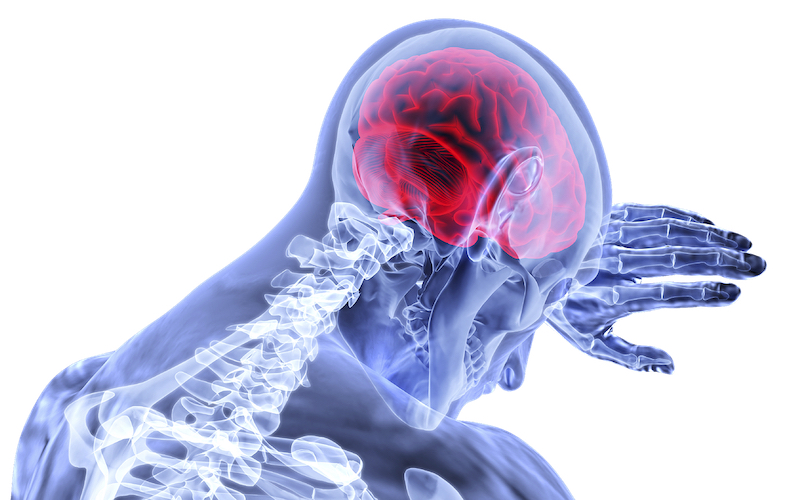To Feel Pain is Human
Pain is part of what it is to be human. In many cases, pain is normal and necessary, helping to diagnose a problem or signaling to our bodies that it’s been exposed to something potentially dangerous. But long-term pain, the kind of pain that persists beyond the time associated with natural healing, can leave a person feeling like there’s little to live for. The drug abuse epidemic that the United States is currently facing is fueled heavily by an overdependence of opioids, drugs legally prescribed by doctors to help treat this chronic pain.
Partly in response to the opioid epidemic, the management and treatment of chronic pain has become an increasingly popular medical specialty and subject of ongoing research. Pharmaceutical companies are actively researching non-addictive medications to replace opioid painkillers. However, these pharmacological treatments will likely still carry the stigma of opiates, as well as other potential side effects. Medical device and digital health companies have also developed several innovative approaches to managing chronic pain without the addictive properties or side effects of drugs.
Why Does it Hurt?
To understand how pain management technologies work, it might help to briefly see how the sensation of pain is transmitted through our bodies. We feel pain when some of the millions of sensory neurons in our body are stimulated or even damaged. The pain signal travels from these neurons to a section of the spinal cord called the dorsal horn. If the pain signal exceeds a certain threshold (by touching a hot stove versus a warm coffee mug, for example), the dorsal horn transmits the pain signal up to the brain, and the body reacts accordingly. Pain treatment works by either blocking the pain signals transmitted to the brain or by masking them with other signals.
Neurostimulation
In ancient Egypt, it was believed that when a person experienced pain, an electric fish could be placed over the site of one’s pain and coaxed to discharge its electrical current until the pain subsided. This method of applying electricity to the body for pain relief, called neurostimulation, is still widely used today, but thankfully is delivered through electronic devices instead.
One of the earliest neurostimulators still used today is a type of device called a spinal cord stimulator (SCS). An SCS consists of a small, stopwatch-sized metal device called an implantable pulse generator (IPG), surgically placed just under the skin in the abdomen or buttocks. Connected to the IPG are thin cables that direct electrical pulses from the IPG to the dorsal horn of the spinal cord. These electrical pulses create a localized sensation known as “paresthesia” at the site of pain. Paresthesia is the tingling sensation akin to one’s limb “falling asleep,” but it’s effective in masking pain by altering the perception of it by the user. While an SCS is one of the more invasive of pain therapies and comes with some risks, advancements in SCS technology has made them smaller, easier to use, and more effective in relieving chronic pain. Some systems, such as Abbott’s ‘Proclaim’ SCS, incorporate Bluetooth technology that allows patients to control the level of electrical stimulation via a smartphone app.
Massachusetts-based NeuroMetrix has developed a device called Quell that also works using neurostimulation, but with a wearable cuff that is placed around the leg. Quell provides pain relief by stimulating the nerves in the upper calf that carry normal, non-painful sensations to your brain, which decreases the perception of pain. It can be used during sleep, and the accompanying smartphone app allows users to adjust the settings and track your sleep, activity, and pain levels. Quell is FDA cleared, and the device the technology behind it is backed by over 20 years of research.
Virtual Reality
One of the hottest trends in tech is virtual reality (VR), a computing environment which completely skews reality with computer-generated imagery. Somewhat like a primitive version of Star Trek’s “holodeck,” this technology allows the user an escape from real life with immersive sound, lifelike visuals, and interactive, gesture-based interaction. Not only is it a great form of entertainment, but years of research have shown that the temporary escape that virtual reality provides can effectively distract the brain from pain.
Virtual reality for pain relief dates back as far as the late 1990s when University of Washington researchers Hunter Hoffman and David Patterson developed a game called SnowWorld, in which players throw snowballs at penguins while navigating a snowy environment. Though it might seem silly, a 2011 study showed a 35- to 50-percent reduction in pain in burn victims who played the game while receiving daily wound care, a level comparable to the effects of a medium dose of opioids. In another study, VR decreased the amount of opioid medication requested from patients by an astonishing 39 percent.
While it’s evident that virtual reality can offer an alleviating distraction from periods of temporary pain, such as during a blood draw or childbirth, it’s somewhat impractical for those experiencing chronic pain to continuously be wearing a VR headset.
Companies such as Los Angeles-based AppliedVR believe that VR can also be used as a tool to teach people to manage their pain in the real world. AppliedVR’s platform takes pain relief beyond mere distraction by offering immersive content on breathing techniques, mindfulness, and relaxation. Some of their modules even incorporate heart rate and breathing data to provide live, personalized feedback to the user. By teaching pain management techniques that can be used independently of the headset, users experience how truly powerful one’s mind can be in responding to pain.
Virtual reality may not single-handedly solve the opioid crisis, but its non-invasive, non-addictive nature and increasing quantity of positive scientific evidence make it a promising and attractive therapy for pain relief. Moreover, as VR continues to become more mainstream, its hardware costs will decrease, making the technology more accessible to patients in need of pain relief. Perhaps a VR headset will someday occupy a spot next the bottle of aspirin in the medicine cabinet.










